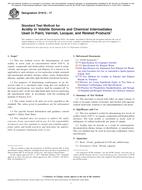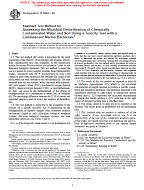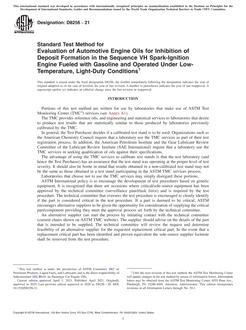1.1 These practices describe the procedures to be used in collecting samples of waterborne oils (see Practice D 3415), oil found on adjoining shorelines, or oil-soaked debris, for comparison of oils by spectroscopic and chromatographic techniques, and for elemental analyses.
1.2 Two practices are described. Practice A involves” grab sampling” macro oil samples. Practice B can be used to sample most types of waterborne oils and is particularly applicable in sampling thin oil films or slicks. Practice selection will be dictated by the physical characteristics and the location of the spilled oil. These two practices are:
| Sections | |
| Practice A (for grab sampling thick layers of oil, viscous oils or oil soaked debris, oil globules, tar balls, or stranded oil) | 9 to 13 |
| Practice B (for TFE-fluorocarbon polymer strip samplers) | 14 to 17 |
1.3 Each of the two practices is designed to collect oil samples with a minimum of water, thereby reducing the possibility of chemical, physical, or biological alteration by prolonged contact with water between the time of collection and analysis.
1.4 This standard does not purport to address all of the safety concerns, if any, associated with its use. It is the responsibility of the user of this standard to establish appropriate safety and health practices and determine the applicability of regulatory limitations prior to use. For specific hazards statements, see Section 7.
Product Details
- Published:
- 01/01/2001
- Number of Pages:
- 3
- File Size:
- 1 file , 73 KB


